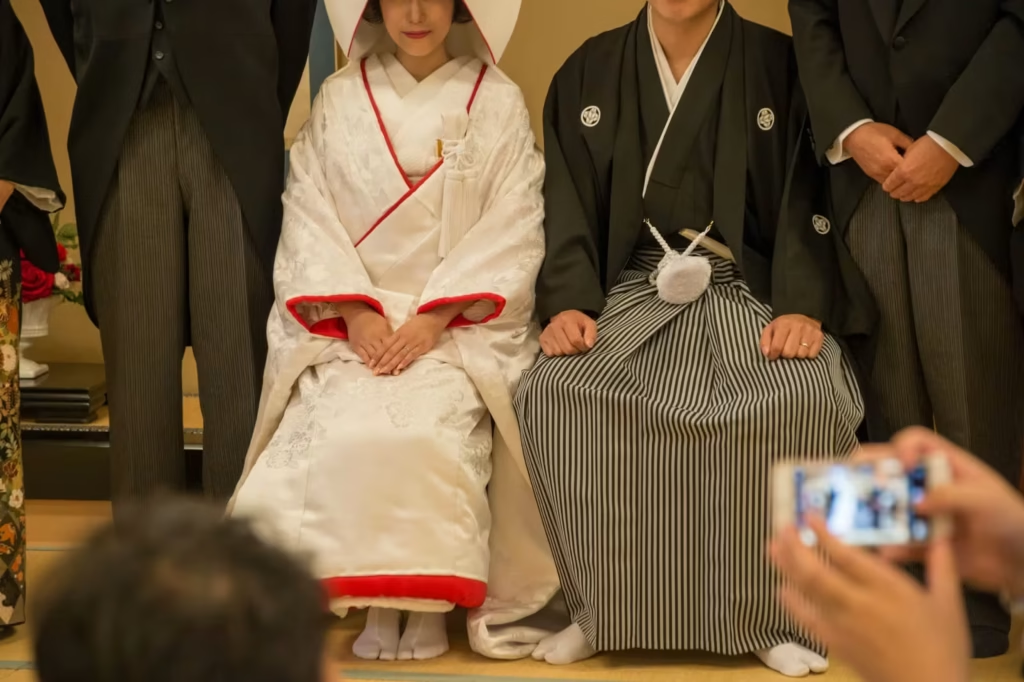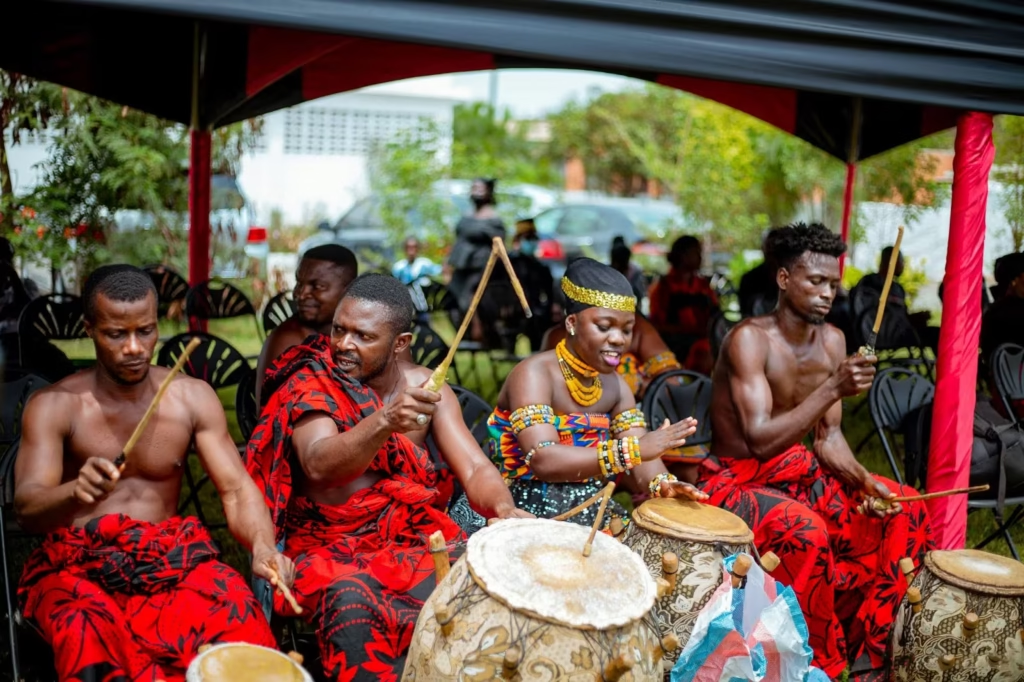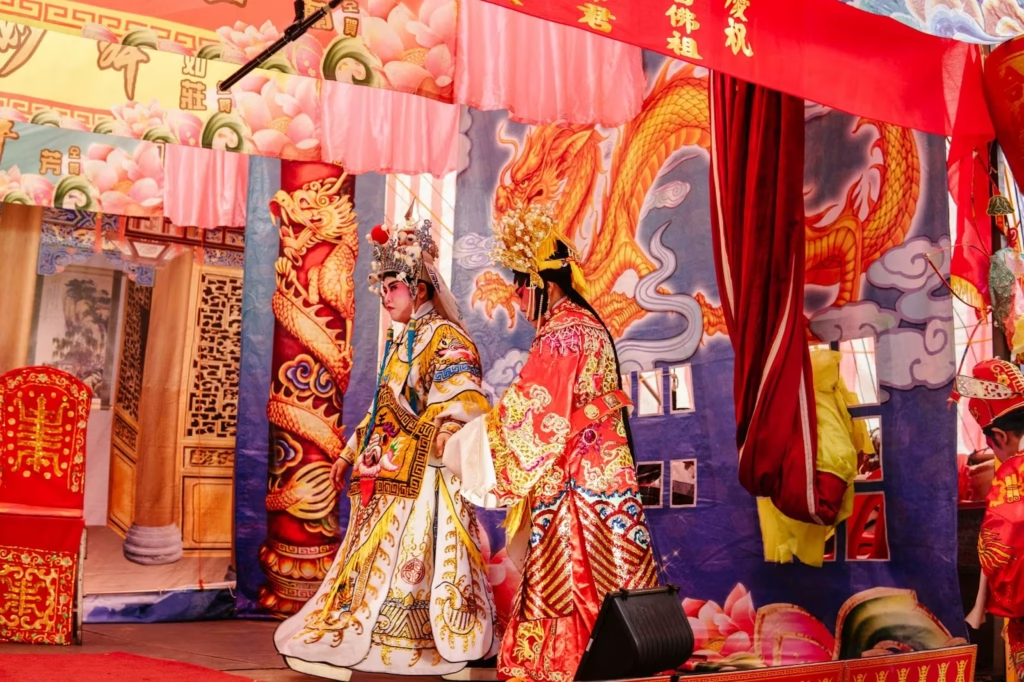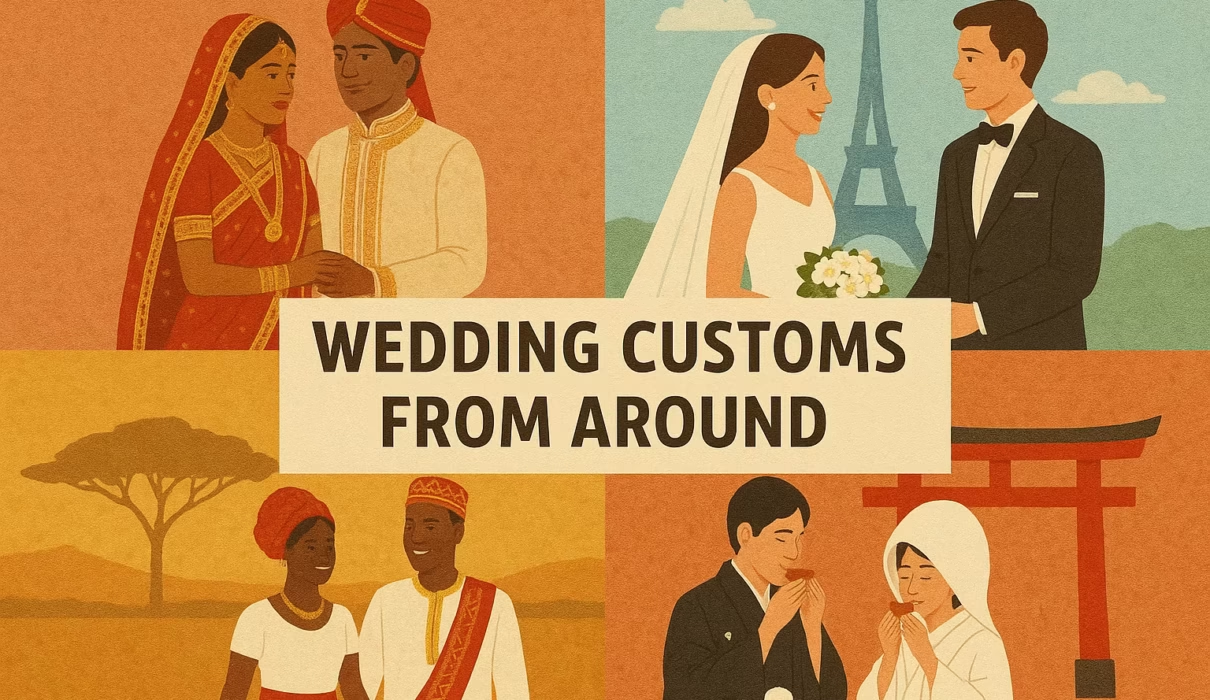Weddings transcend, but the way they’re celebrated differs wonderfully from culture to culture. Each ceremony has a story to tell — of heritage, community, and what love means. Foraging through these traditions is not just about gaining cultural understanding but also inspiration for couples who desire to infuse their own celebrations with something special.
Wedding Customs From Around the World
Weddings transcend, but the way they’re celebrated differs wonderfully from culture to culture. Each ceremony has a story to tell — of heritage, community, and what love means. Foraging through these traditions is not just about gaining cultural understanding but also inspiration for couples who desire to infuse their own celebrations with something special.

India: A Multiday Celebration of Ritual and Color
In India, weddings are usually referred to as being like festivals unto themselves. They can go on for anything from three days to a week, each day devoted to various rituals. The Mehndi ceremony, when henna designs of great complexity are painted on the bride’s hands and feet, is both symbolic and celebratory and is often preceded by music and laughter. The Sangeet night is a time of dance and song, with relatives and friends dancing and singing for the wedding couple.
On the day of the wedding, the Baraat procession, in which the groom comes accompanied by family and friends dancing to music, creates a celebratory atmosphere. The ritual of sacred fire, in which the couple moves seven steps around the fire (saat phere), is an oath of companionship and faith in each other. Indian weddings are as much about family harmony as they are about the bride and groom.

Japan: Elegance Rooted in Tradition
Japanese weddings can combine Shinto practices with contemporary influences. In a standard Shinto wedding, San-san-kudo is done by the couple, with each of them taking three sips from three different cups of sake. This act represents the union not just of the couple but also of their families. White kimonos known as shiromuku are worn by brides to represent purity before they change into colorful kimonas for the reception.
Even Japanese weddings today have an aura of refinement and restraint — a subdued elegance that reflects the gravity of what is being undertaken.

Nigeria: Vibrancy, Song, and Friendship
Nigerian weddings tend to be community events, a reflection of the great emphasis on heritage and family. Traditional dress is part of the day, and brides and grooms dress in richly patterned fabric and headwear. The money dance is one event where guests “spray” the newlyweds with money while dancing to it, representing blessings, prosperity, and sponsorship.
Another prevalent tradition is that both families have to appear with presents in an engagement ceremony prior to the wedding, as a sign of the union of not only two people, but two families. Nigerian weddings are festive, with lots of drumming, dancing, and group euphoria that can continue well into the night.

Mexico: Religion and Celebration Merged
Mexican weddings tend to be a mix of festive atmosphere and Catholic religion. The “lazo” ceremony occurs during the wedding, in which a festive rope or rosary is wrapped about the couple in the form of an infinity symbol, representing everlasting togetherness. The wedding Mass is a formal affair but the reception that follows is full of laughter.
Mariachi music infuses the celebration with energy, and dancing is at its center, from waltz to “money dance.” It’s an ideal blend of sacred and celebratory, illustrating how spirituality and celebration can coexist.

China: Symbolism and Good Fortune
Weddings in Chinese society are full of symbolism to ensure good luck, prosperity, and happiness. Red is the theme that pervades all things — from the bride’s gown (qipao or cheongsam) to adornments — as it symbolizes joy and good fortune. The core ceremony is the tea ceremony, in which the couple serves tea to their parents and elders as a gesture of respect, and the couple is usually blessed and given gifts in return. The more traditional customs can also involve raucous firecrackers to repel evil spirits and include the presence of a dragon or lion dance for added vigor and showmanship to the celebration.
Why These Traditions Inspire Modern Couples
Observing how various cultures observe love reminds us that weddings can become an intensely personal, and not merely formulaic, affair. From India’s multi-day celebrations to Japan’s understated beauty, Nigeria’s energy, Mexico’s mix of spirituality and celebration, and Scotland’s use of Celtic imagery, each culture emphasizes something different about what marriage is.
For contemporary couples, those traditions can be used as an inspiration — whether it’s the use of symbolic rituals, emphasizing family bonding, or merely inventing fresh ways to celebrate happiness. Ultimately, weddings are about love and bonding, and cultural traditions remind us that there are so many ways to celebrate that bond.


